It’s called “kislaya kapusta” or “kvashenaya kapusta” in one part of the world. The majority of the world’s population refer to it by the German word “sauerkraut”. Regardless of how you name it, the benefits of this powerful probiotic are undeniable. And today, we’re sharing this easy sauerkraut recipe with no sugar or oil with all of you.
Last updated: November 30, 2024
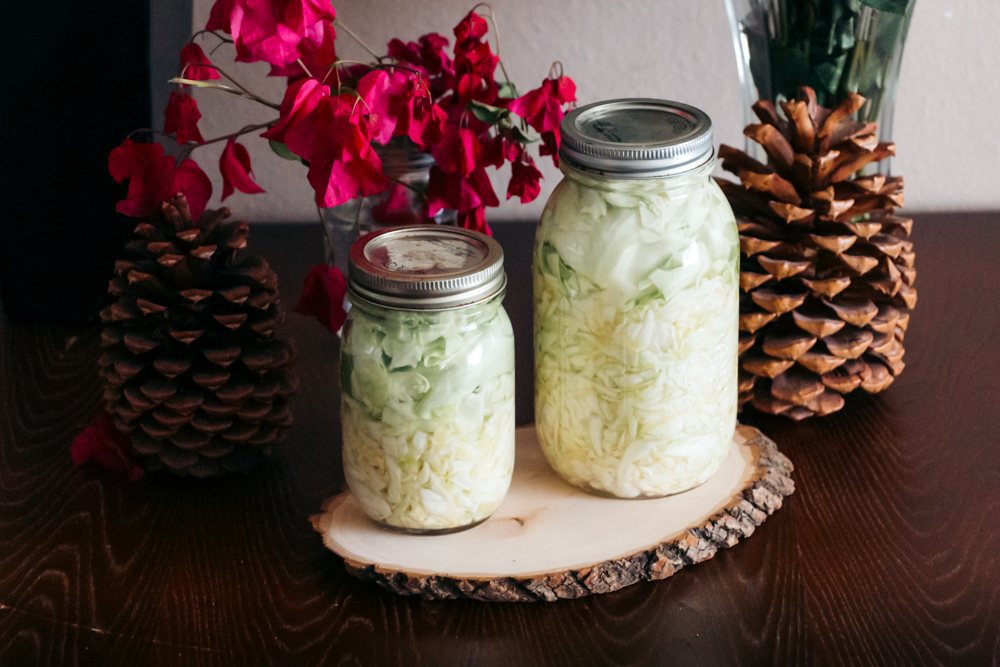
Easy Sauerkraut Recipe (no Sugar, no Oil) to Make in Your Own Kitchen
Any mention of sauerkraut always evokes the same memories of my childhood. Cabbage cut in big chunks (kvashenaya kapusta) served alongside many other traditional dishes at a large table in a slightly dim kitchen with a typical Russian stove in my grandmother’s house in rural Belarus.
In a smaller structure outside the house, one part of which served as a kitchen during warmer months, this sauerkraut was fermented in gigantic barrels. The second room – cool in summer, warm in winter – functioned as a place to store fresh vegetables and freshly made preserves and bottled food.
The barrels with homemade sauerkraut would always join this gastronomic abundance sometime in October – November. It would take at least a week for kvashenaya kapusta to gain its specific taste and properties. After that, it would be an integral part of almost every dinner and every gathering.
While many people use sauerkraut as an additional ingredient for salads – vinegret salad is the first to mention here – my grandma kept it simple. She served kvashenaya kapusta (sauerkraut) by itself, on a separate plate. Everybody (all adults in this case) helped themselves and ate it as a side dish.
On a regular day, sauerkraut accompanied a potato dish and fried lard – a typical Belarusian combination.
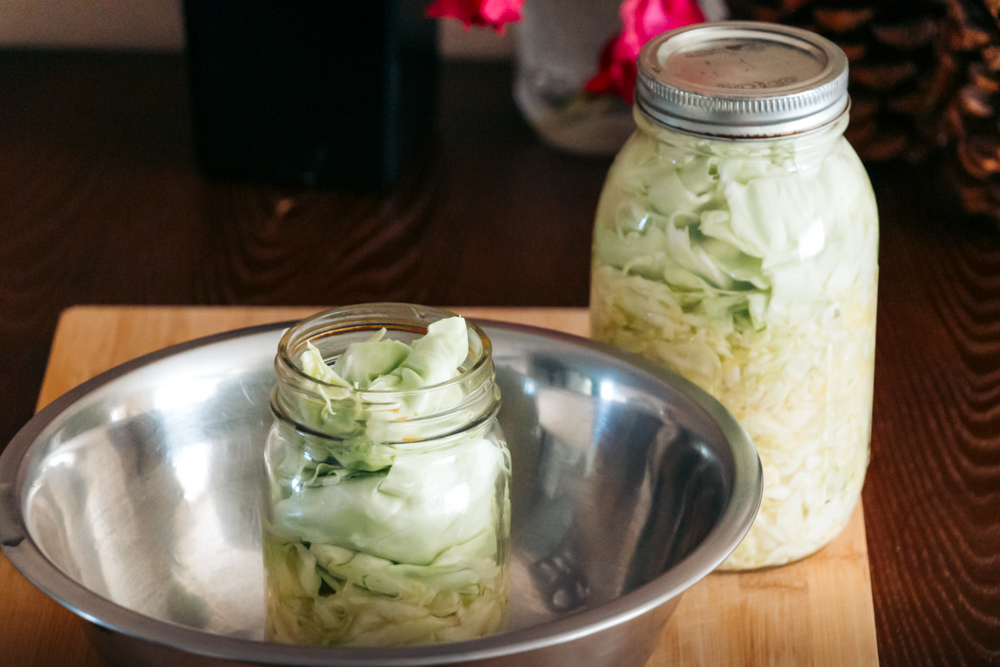
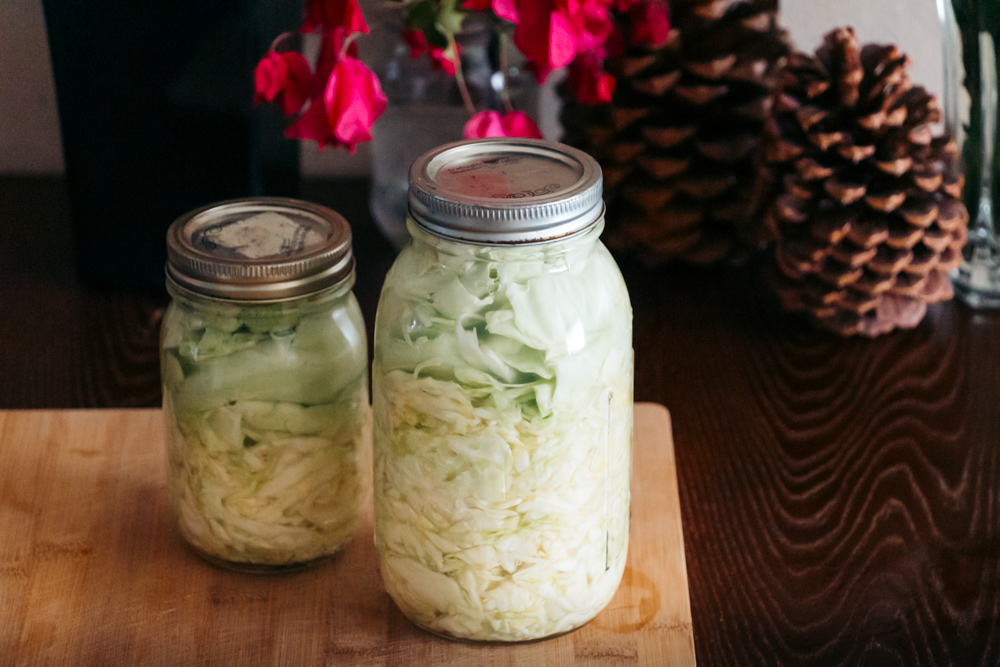
Where Did Sauerkraut Come from?
My grandma never used the fancy word “sauerkraut” while preparing this dish. She called it “kvashenaya kapusta” or “kistlaya kapusta” (“fermented cabbage” or “sour cabbage”). Different variations of these two names exist in Eastern Europe up to this day.
The Western world refers to the fermented cabbage as sauerkraut, a German word for “sour cabbage”. While the Germans take credit for spreading the dish (or at least its name) throughout the world, they are not the ones who invented it.
The first mention of the fermented cabbage aka sauerkraut recipe goes back to 220 B.C. They say Chinese workers preserved the cabbage during construction of the Great Wall of China. The fermented vegetables didn’t get spoiled for a long time and were an excellent food source during the prolonged massive project.
Some 1,000 years later, sauerkraut (and its first recipe) was introduced into the Eastern European region. The versatile dish with tons of health benefits was picked up quickly. Slowly, sauerkraut reached Germany and spread farther west.
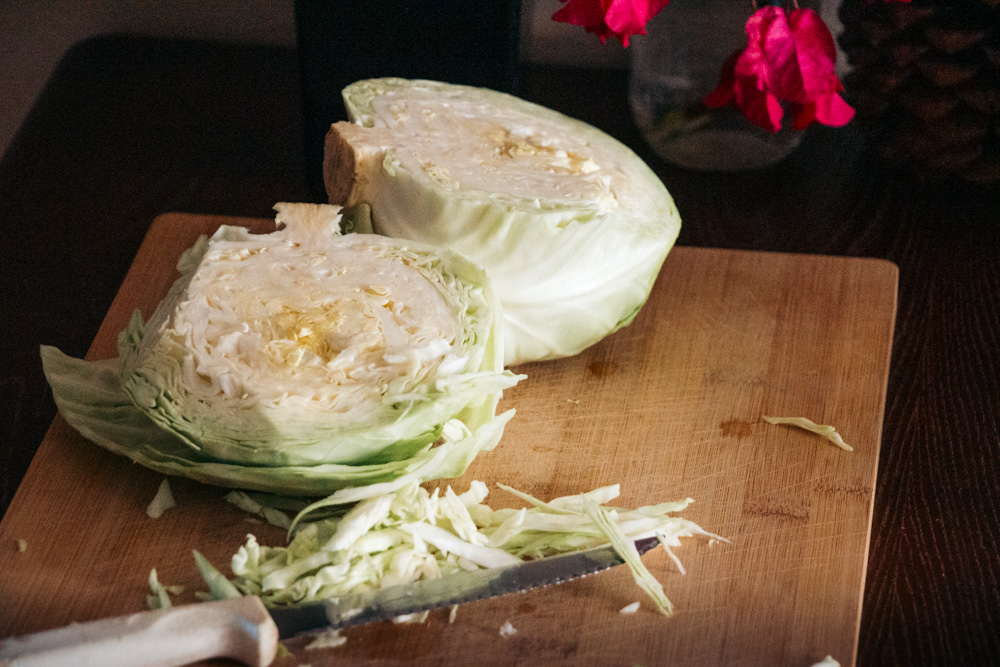
Health Benefits
While the taste and fermentation process that kept the cabbage edible for a long time won the hearts of our ancestors, sauerkraut is considered a new superfood today. The fermented cabbage is packed with a profusion of minerals and vitamins. Its powerful antioxidants help to keep your skin looking younger. Some studies show that sauerkraut aids in fighting cancer.
But above all, the humble fermented cabbage is a powerful probiotic. Made from all natural ingredients, it helps keep your gut healthy. This, in its turn, instantly shows on your glowing skin and overall well-being.
Easy Sauerkraut Recipe to Make at Home
Nowadays, almost every big grocery store adds sauerkraut to its international products section. Similar to kimchi, Korean fermented napa cabbage, sauerkraut can be packed in a fancy jar, making you believe that you need specific equipment to make it.
In reality, though, all you need are a sharp knife, a chopping board, a glass jar, green cabbage, ginger, salt, and water. Some sauerkraut recipes also ask for garlic, onion, and carrot. Easy and so delicious. On top of that, you instantly cut out sugar and oil and adjust salt in this sauerkraut recipe to your liking.
So let’s use this pretty underrated vegetable and make a healthier version of sauerkraut in your own kitchen.
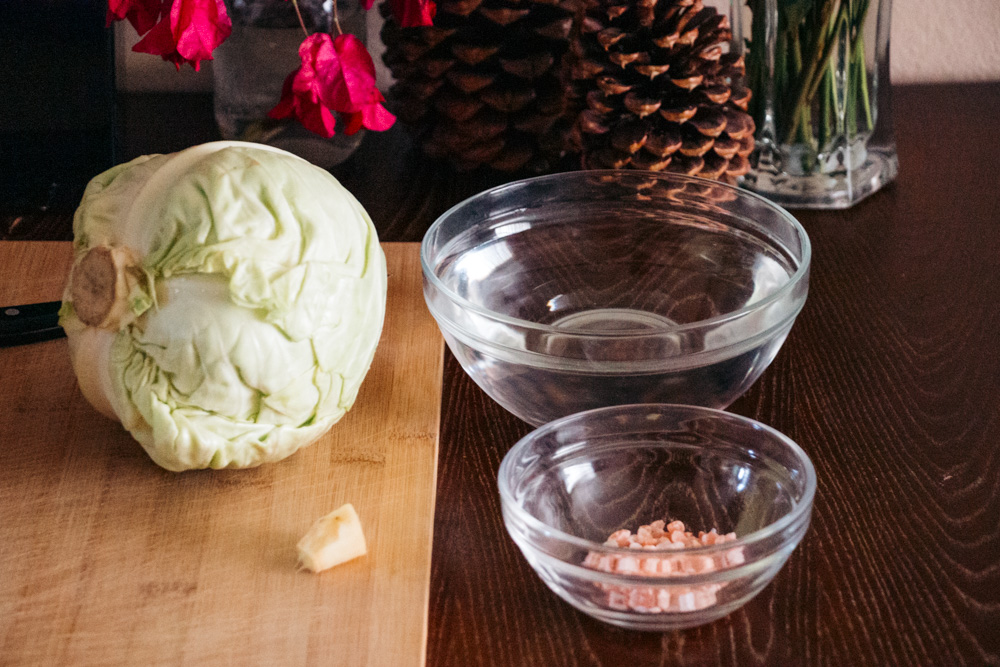
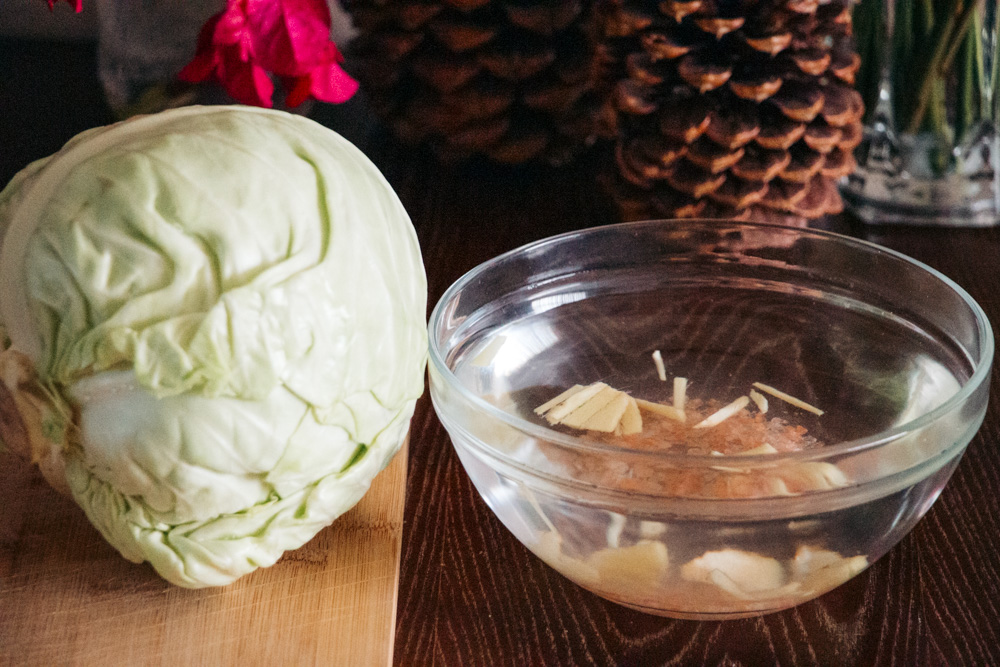
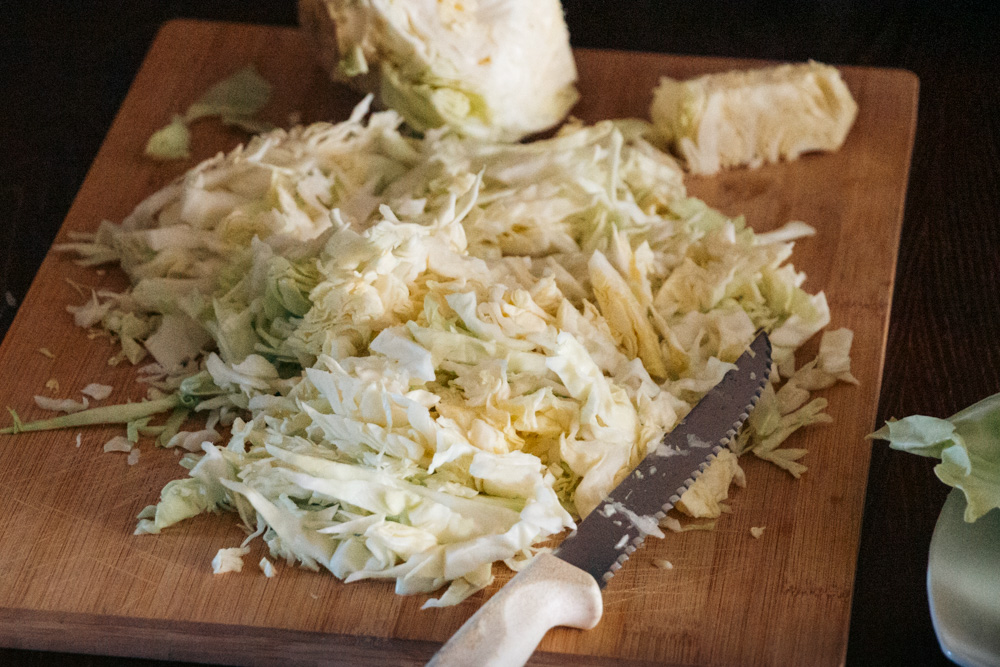
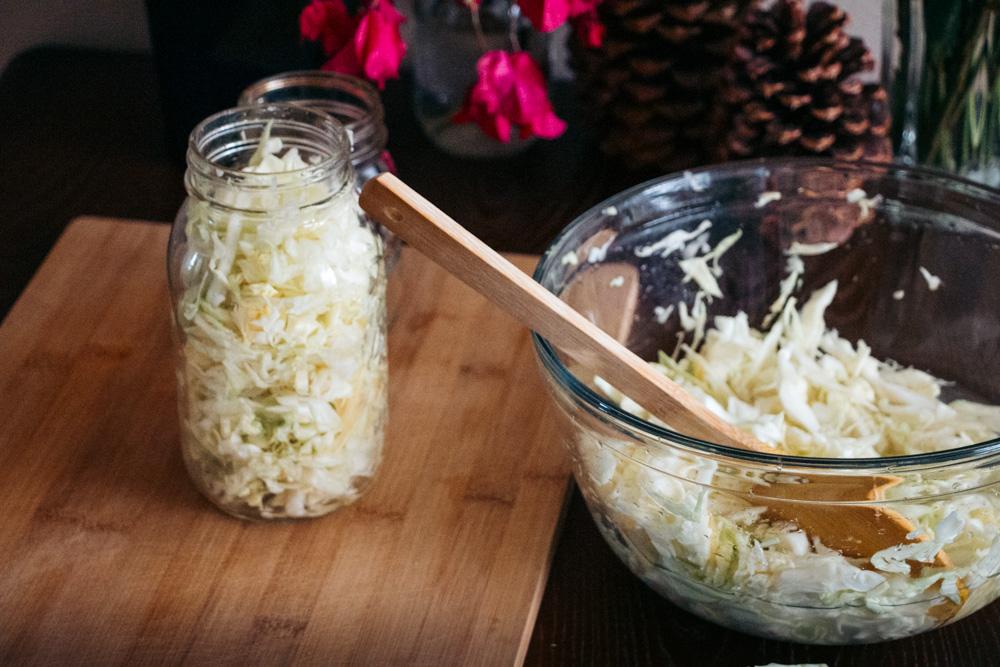
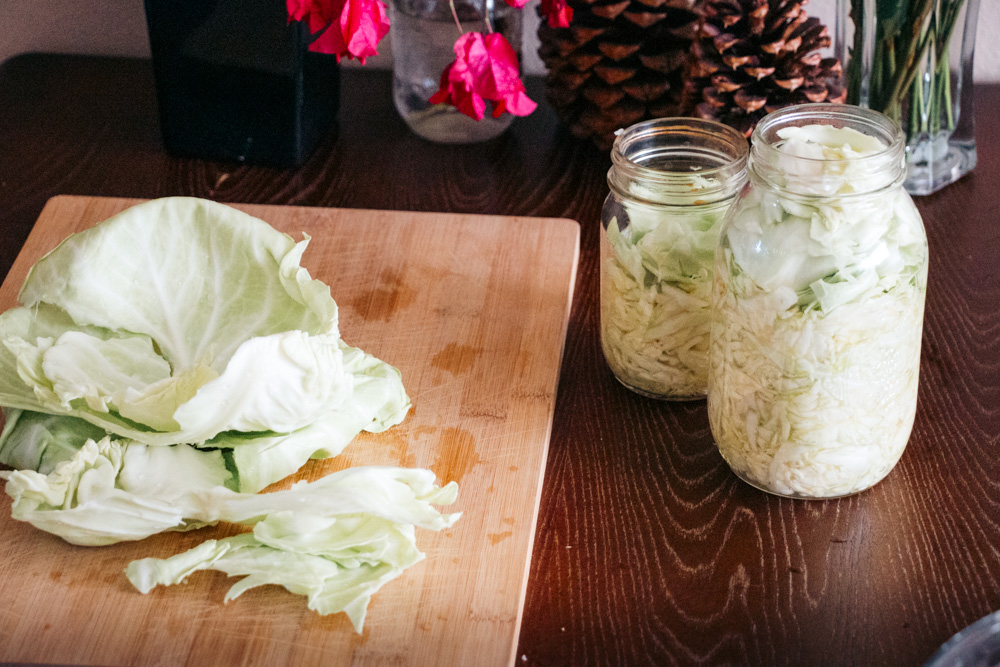
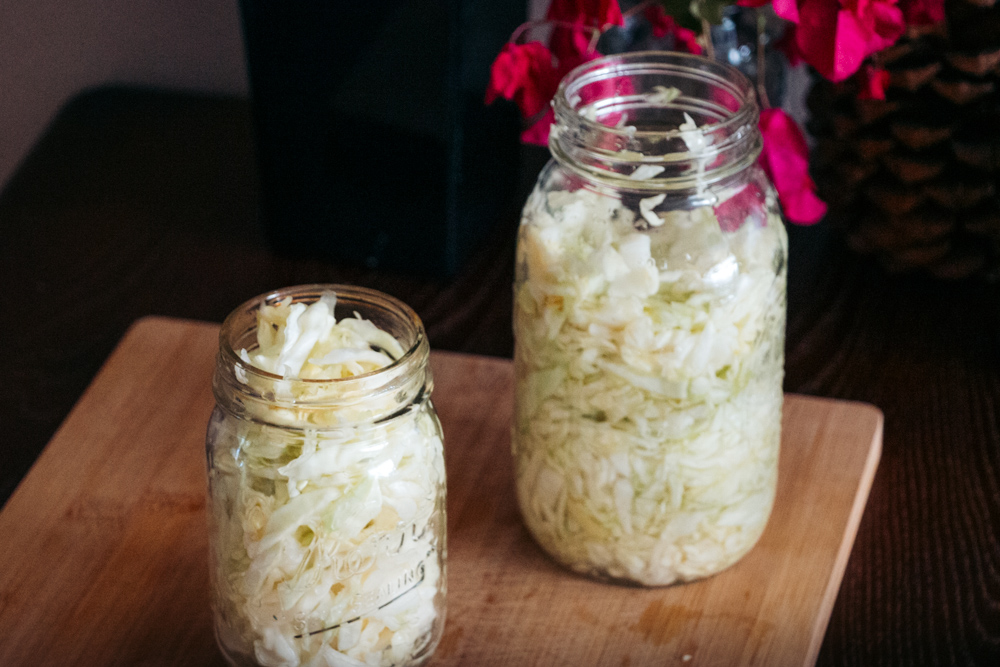
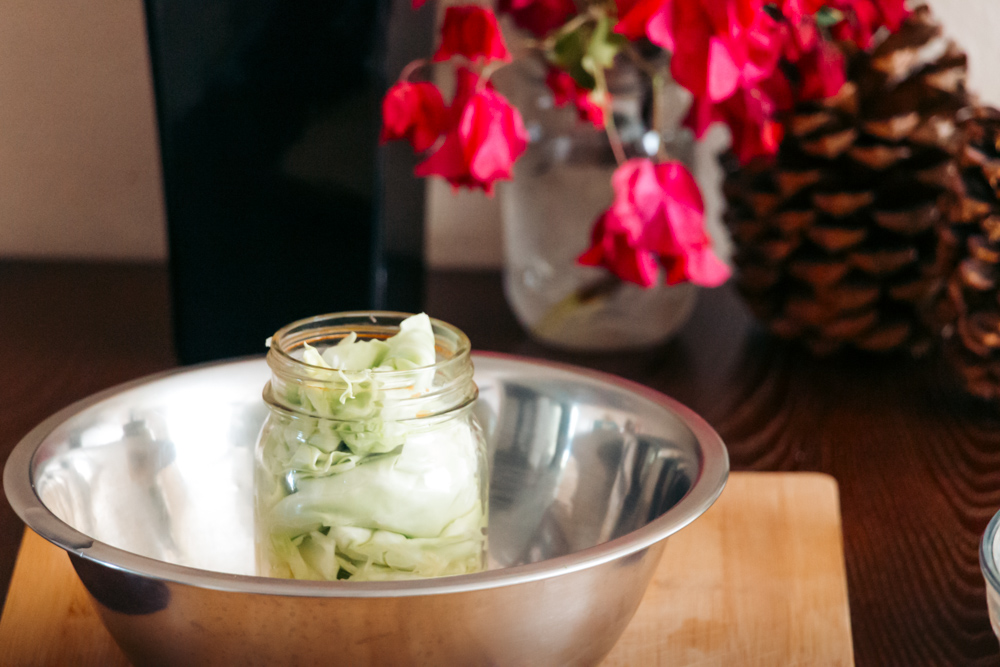
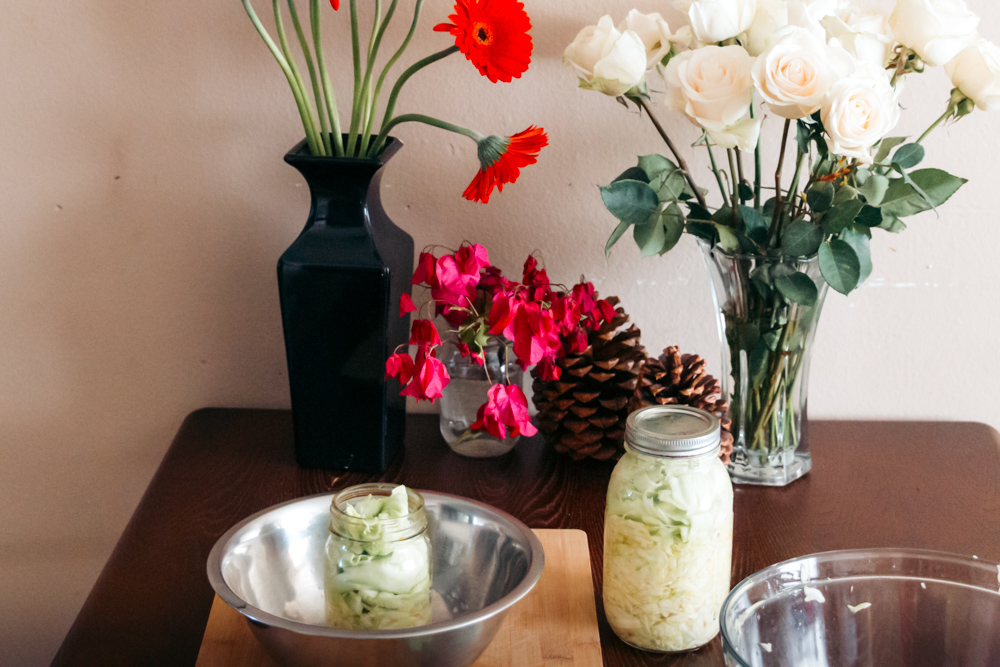
SAUERKRAUT RECIPE (NO SUGAR, NO OIL)
Ingredients
- 1 medium head cabbage, finely sliced
- 4 inches of ginger, peeled and grated
- 1-2 tbsp salt (Normally, you need 1.5 tbsp per pound of cabbage.)
- 1 carrot (optional)
- 4 cups water
Method
- Sterilize a glass container you need to ferment and keep your sauerkraut.
- Finely chop the cabbage, grate the ginger and carrot if you use it. Place the cabbage and carrot in a large mixing bowl.
- In a separate container mix the water, ginger, and salt. Make sure to boil and cool down the water beforehand.
- Pour the liquid over the cabbage and mix well.
- Place the mixture into the glass container. Use a wooden spatula or spoon to pack it tightly.
- Leave approximately 2 inches of room at the top of the container so the cabbage has room to expand.
- Use the outer cabbage leaves to fill the 2-inch space. You can fold them in squares or very tight rolls.
- Pour the salt-ginger liquid to fill the jar to the brim.
- Close the glass container tightly. Keep it in a dark space at a temperature around 65-70° F for 3-5 days.
- When the fermented cabbage is ready, discard the top leaves. Put sauerkraut in the refrigerator where you can keep it for up to a month.
Tips
- It takes approximately 5 days for the cabbage to ferment. Yet sometimes your sauerkraut can reach the desired properties in about 3 days.
- Put the jar with sauerkraut in a large bowl or pot. As the cabbage expands, the water may leak.
If you want to experiment with more dishes from around the world, check out these recipes.
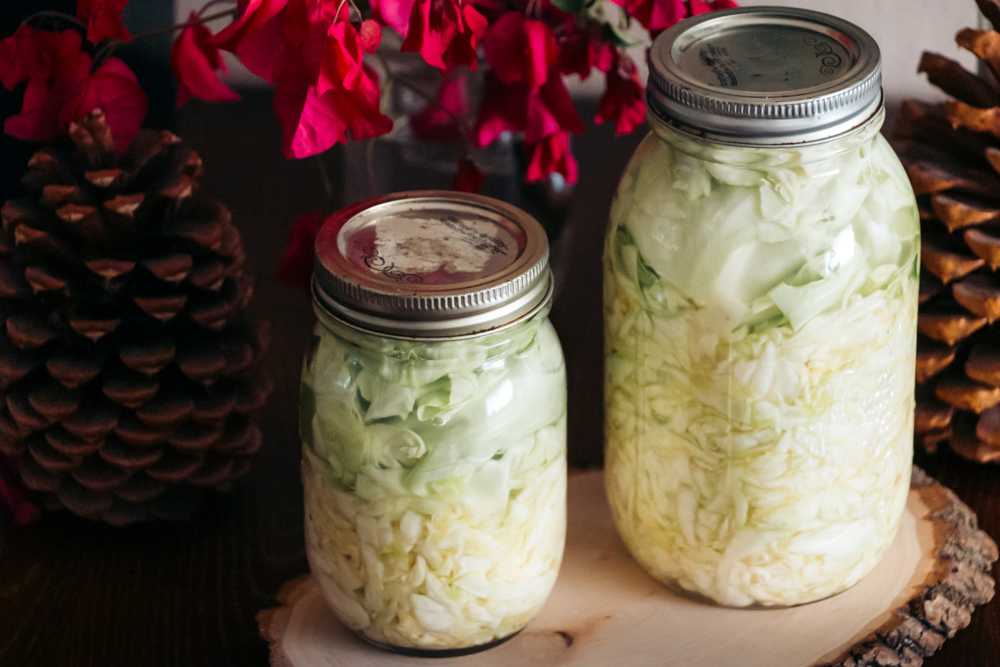
Read Next
- MEXICAN CLASSIC: Travel Inspired Recipes: Traditional Mexican Guacamole
- BELARUSIAN CREPES: Vegan Belarusian Stuffed Crepes – Nalisniki
- FRENCH SOUP: Vegan French Onion Soup